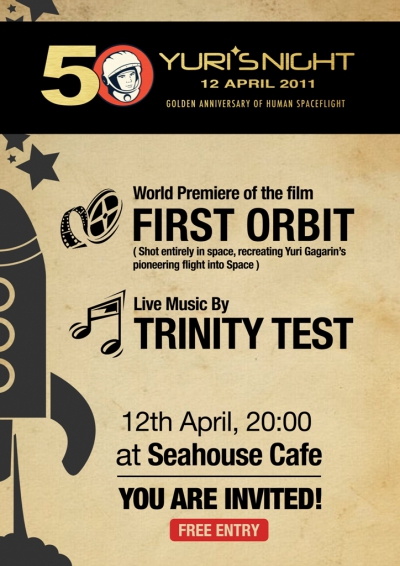Monday, April 11. 2011
Yuri's Night - Celebrating the Golden Jubilee of human space flight
On April 12, 1961, a 27 year old Soviet cosmonaut called Yuri Gagarin was launched into space aboard the Vostok-1 spacecraft and spent 1 hour 48 minutes in orbit around the Earth. With that, he became the first human to ever leave the bounds of our little planet and ushered humans to space.
Maldivian Association for Advancement of Science will join the Global Astronomy Month's global Yuri's Night celebrations with a local event to mark the occasion of this landmark human achievement. The event will take place at Seahouse Café, Male' on 12th April from 8pm-11:30pm and will include electronic down-tempo DJ set by local music trio Trinity Test and the screening of the movie First Orbit (shot entirely in space, recreating Yuri Gagarin's pioneering flight) as part of its global premier.
It's a time to celebrate, so come and join! Join the MAAS Facebook page to keep up with their events.

Maldivian Association for Advancement of Science will join the Global Astronomy Month's global Yuri's Night celebrations with a local event to mark the occasion of this landmark human achievement. The event will take place at Seahouse Café, Male' on 12th April from 8pm-11:30pm and will include electronic down-tempo DJ set by local music trio Trinity Test and the screening of the movie First Orbit (shot entirely in space, recreating Yuri Gagarin's pioneering flight) as part of its global premier.
It's a time to celebrate, so come and join! Join the MAAS Facebook page to keep up with their events.




